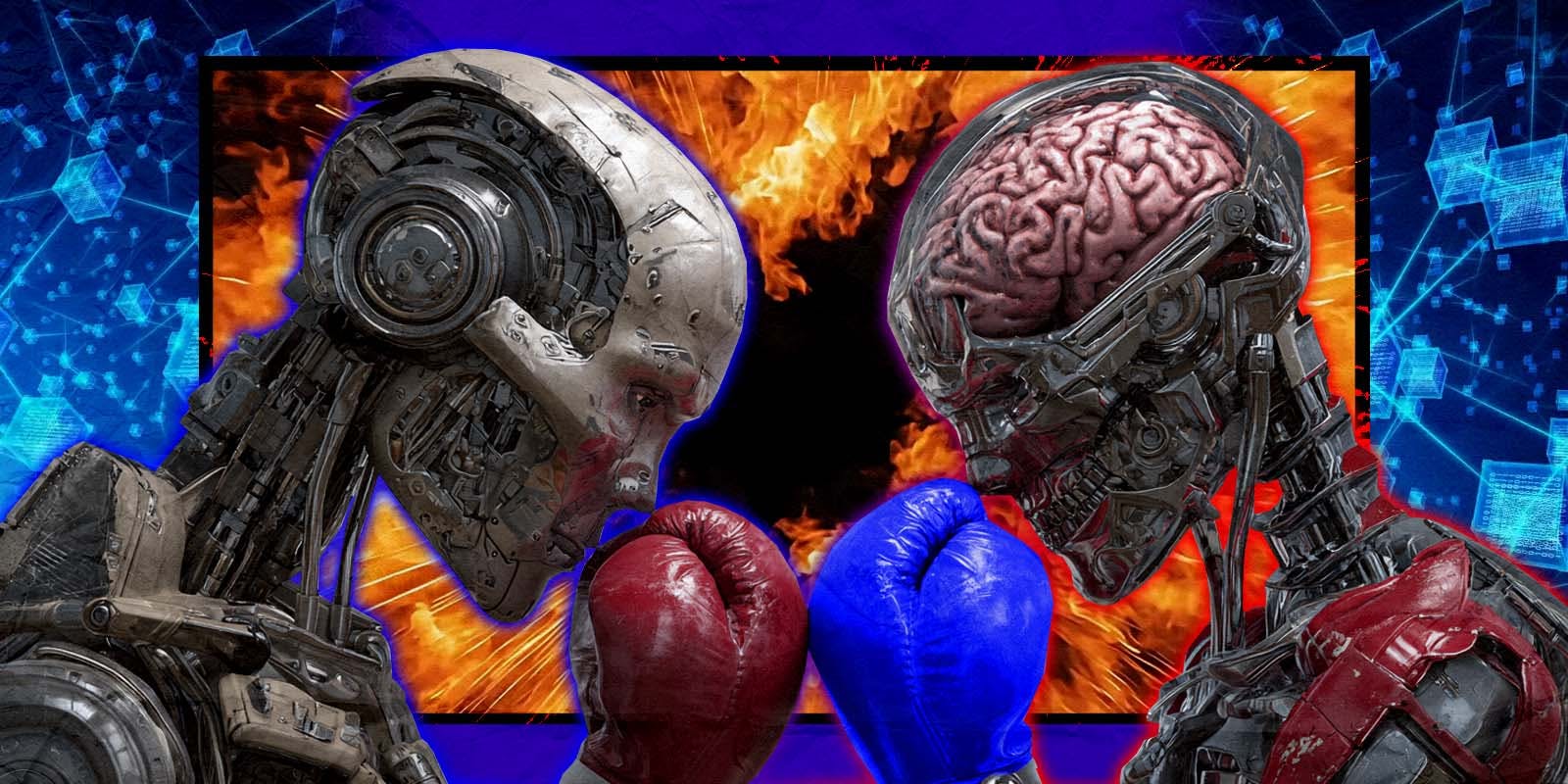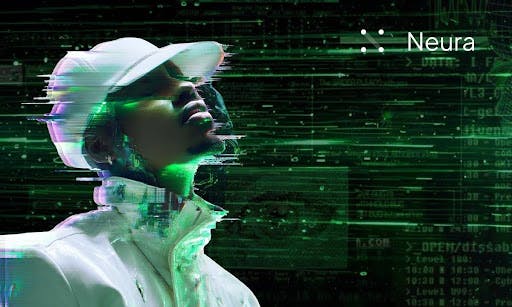Data used to be passive. You gave it away. Got some ads in return, with a recommendation or two. But now data thinks. Or, at least, powers something that appears to. And that “something”, artificial intelligence, is rapidly becoming the infrastructure behind every industry we know.
The 2024 survey by McKinsey & Company shows AI adoption in organizations rising to 72 percent. AI automates, scales, and predicts. Web3, on the other hand, embeds ownership into systems that never had it. Put them together, and suddenly you’re not just using intelligence, you’re co-owning it, shaping how it learns.
And here comes the big question:
Who gets to own AI? Governments? Silicon Valley? Open-source communities? Maybe a DAO with a bunch of pseudonymous contributors? Or could ownership actually return to the people feeding these systems in the first place, the users?
The Centralized AI Problem
Right now, AI’s winning streak comes with a very particular structure. Big models, closed systems, centralized control.
ChatGPT, Gemini, Claude, etc., are working incredibly well, in some cases. But only a few companies own the full stack: models, compute, and data.
Let’s be clear, AI is firmly in the hands of Big Tech. Without broader oversight, companies like Microsoft and Amazon could use their influence to control the rules of AI development, just as they’ve done across other major industries.
You can’t audit how they’re trained. You can’t verify what’s filtered out. You don’t get a stake in the billions they’re beginning to generate.
There’s a weird contradiction here. These models rely on data scraped from millions of people across the internet, such as Reddit posts, GitHub code, Stack Overflow answers, and Wikipedia articles. But none of the people who made that knowledge have access to how it’s used. Or control over what it becomes.
Putting the future of intelligence into the hands of a few companies is not exactly a neutral move. n
What Web3 Can Bring to AI
This is where things start to shift.
Web3 isn’t just about crypto, DeFi, or JPEG monkeys. At its core, it’s about building networks that run without centralized owners. Where value accrues not to gatekeepers, but to contributors. Vitalik Buterin, co-founder of Ethereum, calls Web 3.0 the era of the truly decentralized web, where individuals will have more control over their data and privacy.
When applied to AI, Web3 introduces a new economic layer:
- Compute resources, like spare GPU power, can be tokenized — anyone contributing them to the network gets rewarded.
- Tasks like data labeling and validation become visible and compensated roles.
- Every model checkpoint can be recorded on-chain, and decisions about model updates or governance can be made by token holders.
This isn’t just about decentralizing infrastructure. It’s about building entire markets around intelligence, where contributors, not corporations, capture value.
In such a system, AI models are trained across distributed networks. Thousands of independent nodes supply compute and data, earning tokens based on how valuable their input is.
Web3 makes it possible to turn AI from a closed, opaque process into one that’s cooperative, transparent, and driven by incentives. And a few projects are already building toward it.
Real Projects Leading the AI x Web3 Movement
Let’s look at who’s putting these ideas into live.
Bittensor (TAO)
Probably the most ambitious. Bittensor creates a decentralized network for machine learning. You run a model, contribute to the collective intelligence, and if your output is useful, you get rewarded in TAO.
It works like a mining network, but instead of securing transactions, you’re mining for intelligence.
What’s the problem?
Running a node requires serious technical chops, and the economic model is still evolving.
SingularityNET
This one’s been around since the days of the Sophia robot, the humanoid AI developed by Hanson Robotics that became the first robot to receive citizenship in Saudi Arabia. Sophia’s conversational abilities were powered in part by early versions of SingularityNET’s AI modules, which showcased the project’s ambition: to create an open, decentralized network where AI services like computer vision, NLP, and time series analysis could be accessed via APIs and paid for using AGIX tokens.
It’s a compelling vision. The problem is, it’s been around for years and still hasn’t found breakout usage. So the question is: can it shift from being a concept to infrastructure that people actually use?
Fetch.ai
It blends blockchain with autonomous AI agents. Think logistics coordination, supply chains, IoT. Fetch builds systems where AI agents communicate and make decisions based on real-world data, with blockchain handling the trust layer underneath.
Strong team, real partnerships, but the tech is still maturing, and the use cases aren’t exactly consumer-friendly. Yet.
To understand how Web3 is changing the way we build and own AI, it’s worth comparing the architectures of key projects in the field. Here’s a quick look at four platforms: the centralized giant OpenAI and three decentralized alternatives — Bittensor, SingularityNET, and Fetch.ai. Each takes a different approach to learning, computing, incentivizing participants, and governance.
This chart shows how different models distribute control, value, and access to intelligent systems:
| Feature | OpenAI | Bittensor (TAO) | SingularityNET (AGIX) | Fetch.ai (FET) |
|—-|—-|—-|—-|—-|
| Model Ownership | Centralized (OpenAI Inc.) | Decentralized (network of miners/validators) | Decentralized (AI service providers on the network) | Hybrid (core team with open agent participation) |
| Access | Closed APIs, permissioned | Open participation via staking & contribution | Open AI marketplace, token-gated | Open agent-based economy, focused on B2B/B2G use cases |
| Training Data | Proprietary, non-transparent | Community-sourced, rewarded with TAO | Depends on providers; no unified dataset | Task- or agent-specific; limited public datasets |
| Compute | Centralized (Azure-backed) | Decentralized; nodes run models and vote on value | Off-chain AI execution, accessed through APIs | Local computation by agents interacting on the network |
| Incentives | Profits accrue to OpenAI | TAO tokens earned for useful outputs | AGIX tokens used for service payments | Agents can earn FET for task fulfillment or coordination |
| Governance | Private, internal board | Token-governed, on-chain proposals | Decentralized governance with community involvement | Mix of off-chain and roadmap-based community input |
| Transparency | Limited insight into model training or logic | Contributions ranked and rewarded transparently | Code is open-source, but usage metrics are unclear | Project is open, but agent-level logic often abstracted |
| Goal | Monetize general-purpose AI | Build an open, incentivized market for machine intelligence | Create a decentralized global AI marketplace | Enable autonomous agent economies via AI + blockchain |
Others worth watching?
Gensyn’s working on decentralized computing for model training.
Ocean Protocol tackles data sharing for AI with privacy guarantees.
Rejuve.ai explores AI for longevity and medical research.
Cortex is trying to bring AI inference on-chain itself.
Are they perfect? Nope. Are they building toward something radically different than Google or OpenAI? Definitely. These projects are exploring decentralized cognition, not just decentralized finance or storage.
My Perspective: How AI Is Already Changing Crypto Ads and Games
This isn’t just conceptual. I’ve watched AI reshape key areas of Web3 from the inside. The shift is already underway, especially in advertising and gaming, where real-time data and user interaction are everything.
In Advertising:
AI now plays a central role in crypto ad networks, far beyond what most users see. It detects click fraud, flags Sybil attacks, and scores wallet quality across campaigns. We’re not just buying impressions anymore, we’re buying predicted behavior.
In practice, that means modeling wallet-level activity to assess conversion potential:
- When was the wallet created?
- What assets does it hold?
- What’s its DeFi or trading history?
It’s the crypto-native version of psychographics with no personal data, just behavioral signatures on-chain.
We also use generative models for ad creative production and real-time performance optimization. Thanks to the fact that Web3 data is pseudo-anonymous, models aren’t trained on user profiles, but on token flows, NFT interactions, and dApp activity.
In Gaming:
AI’s role in NFT gaming is just as transformative. We use it to drive dynamic storytelling. AI-driven NPCs (non-player characters) adjust how they interact with or react to the player based on patterns extracted from the player’s on-chain activity, reflected in their wallet history.
For example, if a player’s wallet shows they mainly collect rare NFTs, NPCs might offer them exclusive quests or trade options.
Difficulty settings are modified based on past interaction patterns. Game environments evolve based on asset holdings. It’s personalization native to Web3 logic.
We’ve also begun applying predictive models to loyalty systems, forecasting drop-off and nudging players back before they disappear.
In both spaces, the dynamic is clear. AI helps decode intent and behavior, while Web3 ensures users retain ownership of the data and value they generate.
What Needs to Happen Next
AI and Web3 aren’t ready for mainstream adoption yet, though the gap is closing faster than many expect. The global Web3 market is anticipated to reach around USD 99.75 billion by 2034.
XR (14.69% growth), Web3 Security (90.77% growth), and DeFi Wallets (58.77% growth) are expanding sectors within Web3, collectively driving innovation with thousands of companies and tens of thousands of professionals worldwide.
We need clear standards, models that work together, and open-source tools that are usable beyond people who are experts in distributed systems. Privacy-preserving techniques such as zkML and federated learning should be fundamental.
Tokenomics, too, requires a course correction. The focus can’t simply be on speculative price movements. The real value is in incentivizing high-quality contributions, good data, effective compute resources, and robust model architectures.
Final Thought
Ultimately, the future of intelligence doesn’t belong to a handful of actors, tech giants, the government, and early token holders. If built intentionally, the combination of AI and Web3 could enable billions to co-own and benefit from the intelligent systems they help shape.
Failing to do so risks handing control over to those who won’t share the spoils. Building this future requires deliberate effort, or someone else will build it for us, and their priorities won’t necessarily align with ours.









